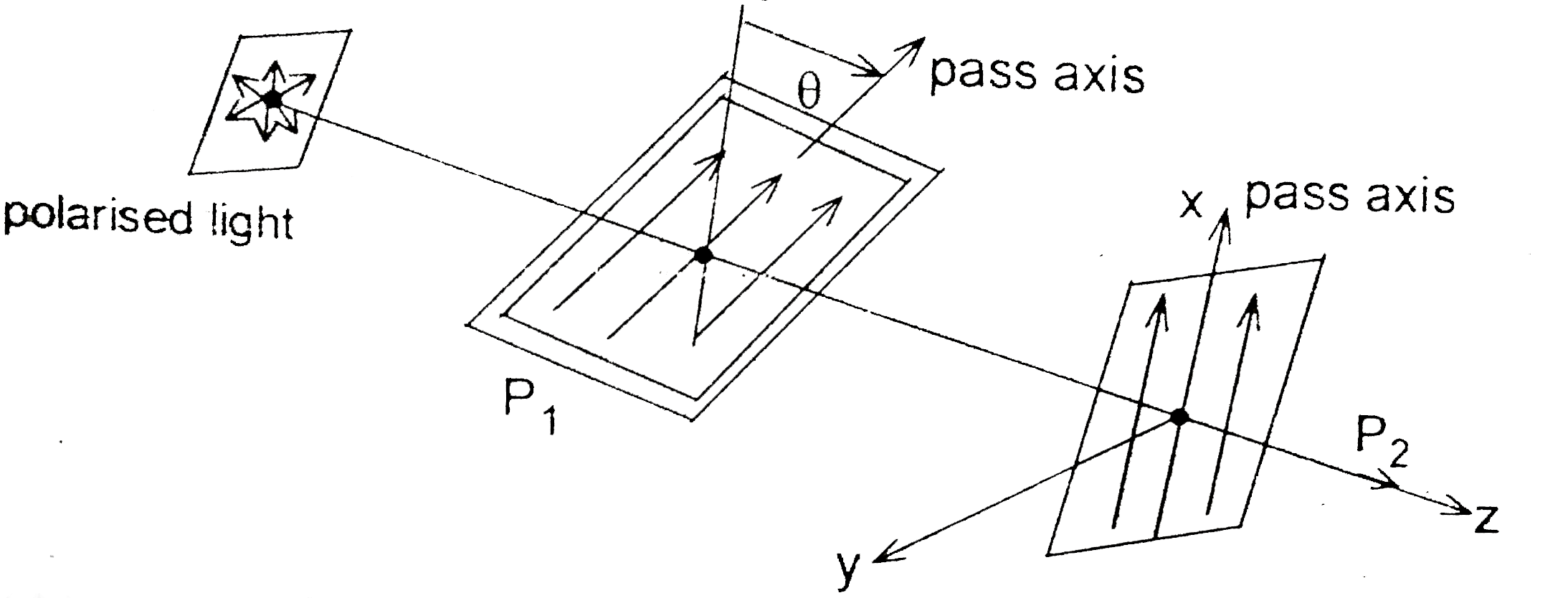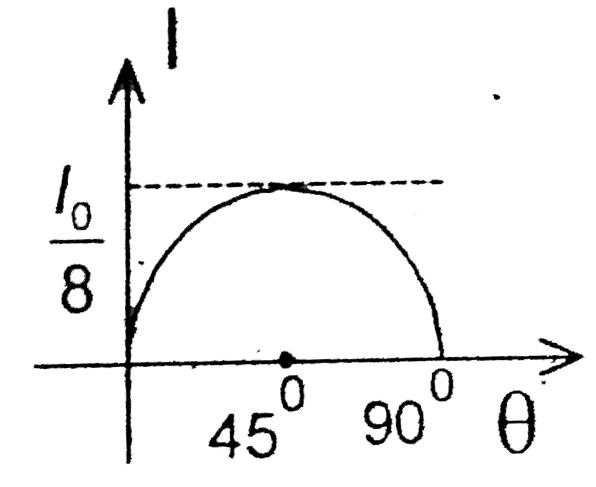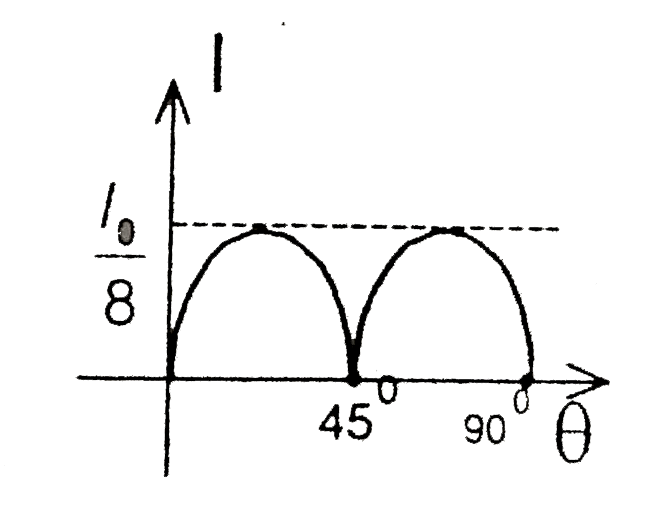(a) Unpolarised light of intensity I0 passes through two polaroids P1 and P2 such that pass axis of P2 makes an angle θ with the pass axis of P1, Plot a graph showing the variation of intensity of light transmitted through P2 as the angle θ varies from zero to 180∘.
(b) A third polariod P3 is placed between P1 and P2 with pass axis of P3 making an angle β with that of P1. If I1, I2 and I3 represent the intensities of light transmitted by P1, P2 and P3 determine the values of angle θ and β for which I1=I2=I3.
(a) The required graph would have the form shown as :

Using I2=I1cos2θ
(b) I1= Light transmitted by P1
I3= Light transmitted by P3=I1cos2β
I2= Light transmitted by P2=I3cos2(θ−β)
∴I2=I3
I1cos2β.cos2(θ−β)=I1cos2β
θ=β
Also I1=I2
I1=I1cos2θ
or cos2θ=1
∴θ=0∘ or π
Therefore β=0∘ or π
Topper's Solved these Questions
- WAVE OPTICSBOOK - OSWAAL PUBLICATIONCHAPTER - WAVE OPTICSEXERCISE - Topic 4 POLARISATION (long answer type question)
4 Videos
- WAVE OPTICSBOOK - OSWAAL PUBLICATIONCHAPTER - WAVE OPTICSEXERCISE - Topic 4 POLARISATION (short answer type question-I)
2 Videos
- SOLVED PAPER 1BOOK - OSWAAL PUBLICATIONCHAPTER - SOLVED PAPER 1EXERCISE - Exercise
39 Videos
Similar Questions
Unpolarized light is intensity I0 passes through two polaroids P1 and P2 such that pass axis of P2 makes an angle θ with the pass axis of P1. A third polaroid P3 is placed between P1 and P2 with pass axis of P3 making an angle β with that of P1. If I1,I2,I3 represent intensities of light trnasmitted by P1,P2,P3, determine the values of angle θ and β for which I1=I2=I3.
View SolutionUnpolarised light of intensity I0 passes through two polaroids P1andP2 such that pass axis of P1. A third polaroid P3 is placed between P1andP2 with pass axis of P3 making an angle 60∘ with that of P1. Determine the intensities of light transmitted by P1,P2andP3.
View Solution
Knowledge Check

If a polarised light of intensity l0/2 is passed through two polariods P1 and P2 as shown in figure. Then the intensity of light observed by an observer on other side of P2 (if the polaroid P1 is rotated clockwise) as a funtion of angle θ.A B
B C
C D
D
If polarised light of intensity I passes through a polaroid whose pass axis makes an angle θ from the vibration axis of polarised light, the intensity of emergent light is I'=Icosθ.
View SolutionUnpolarised light is passed through a polaroid P1. When this polarised beam passes through another polaroid P2 and if the pass axis of P2 makes angle θ with the pass axis of P1, the write the expression for the polarised beam passing through P2. Draw a plot showing the variation of intensity when θ varies from 0 to 2π.
View SolutionUnpolarised light is passed through a polaroid P1. When this poalrised beam passes through another polaroid P2, and if the pass axis of P2 makes an angle θ with pass axis of P1, then write the expression for the polarised beam passing through P2. Draw a plot showing the variation of intensity when θ varies from 0 to 2 π.
View SolutionUnpolarised light is passed through a polaroid P1. When this poalrised beam passes through another polaroid P2, and if the pass axis of P2 makes an angle θ with pass axis of P1, then write the expression for the polarised beam passing through P2. Draw a plot showing the variation of intensity when θ varies from 0 to 2 π.
View SolutionA narrow beam of unpolarised light of intensity I0 is incident on a polaroid P1. The light transmitted by it is then incident on a second polaroid P2 with its pass axis making an angle of 60∘ to the pass axis of P1. Find intensity of light transmitted by P2.
View SolutionA narrow beam of unpolarised light of intensity I0 is incident on a polaroid P1. The light transmitted by it is then incident on a second polaroid P2 with its pass axis making an angle of 60∘ to the pass axis of P1. Find intensity of light transmitted by P2.
View Solution
If a polarised light of intensity l0/2 is passed through two polariods P1 and P2 as shown in figure. Then the intensity of light observed by an observer on other side of P2 (if the polaroid P1 is rotated clockwise) as a funtion of angle θ.
View Solution
